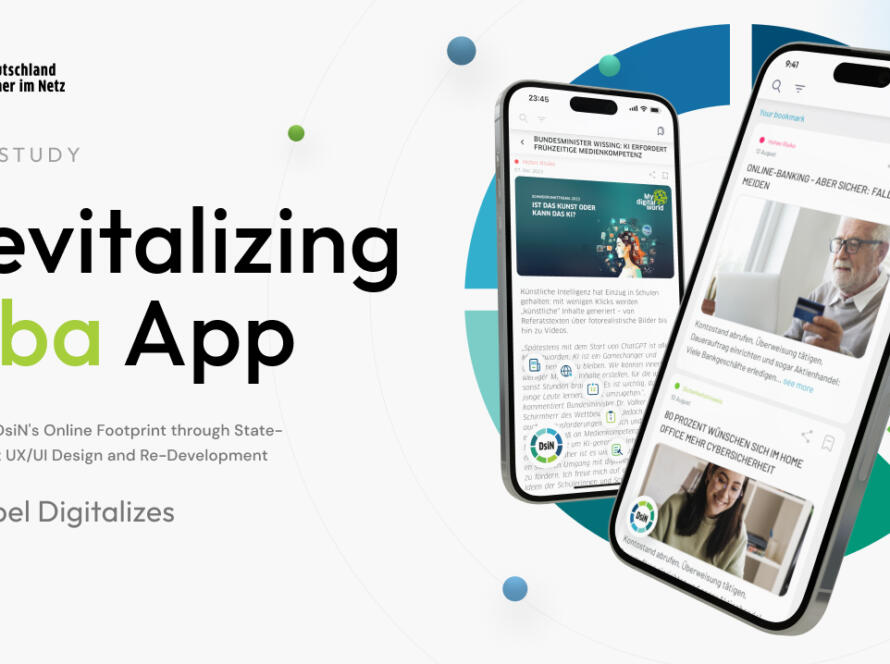Digital transformation has become a critical journey for large companies, many of which embarked on this path over a decade ago. Despite significant investments, many executives remain dissatisfied with the outcomes, with only 22% achieving most of their goals and a mere 2% fully realizing their objectives, according to Bain & Company. This disparity underscores the need for a more strategic and effective approach to digital transformation.
At Arckipel, we leverage our expertise in digital transformation services to provide actionable insights and innovative solutions. Drawing from Bain’s research and our extensive experience, we would like to analyze and expand on their introduced six critical actions that successful companies undertake to navigate continuous disruption and technological advancement.
1. Align Technology Priorities with Business Strategy
Ban & Company’s article emphasizes the transformation of technology from a mere support function to a strategic driver within organizations. This evolution requires Chief Information Officers (CIOs) to align technology investments with business strategies to ensure these initiatives directly contribute to achieving business goals. Such alignment fosters rapid change and uncovers new opportunities.
What Aligning Technology with Business Strategy Means for Your Company
So, what does aligning technology priorities with business strategy mean for your company? It involves several concrete actions:
-
Identify Key Business Objectives: Begin by clearly defining your business goals. These might include increasing market share, improving customer satisfaction, or enhancing operational efficiency.
-
Evaluate Technology Investments: Assess your current technology landscape and identify which technologies can best support your business objectives. This could mean investing in data analytics for better decision-making, IoT for operational monitoring, or cloud computing for scalability.
-
Integrate Technology into Core Operations: Ensure that technology is not siloed but integrated into core business functions. This might involve redesigning workflows, training employees, or updating infrastructure.
-
Measure Impact and Adjust: Continuously monitor the impact of your technology investments on business outcomes. Use data-driven insights to make necessary adjustments and optimize the alignment.
By following these steps, companies can ensure that their technology investments drive meaningful business outcomes.
Transformative Insights: Arckipel’s Approach with Solucalc
At Arckipel, we understand the importance of aligning technology with business strategy. Our work with Solucalc exemplifies this approach. Solucalc sought to revolutionize its water softener systems by integrating IoT for real-time monitoring. We developed a user-friendly mobile app and a scalable server infrastructure that aligned perfectly with Solucalc’s business objectives of enhancing customer satisfaction and operational efficiency.
Through our comprehensive assessments of Solucalc’s business strategies and technology landscape, we ensured that our solutions were not only technologically advanced but also strategically aligned. This alignment drove maximum business value, demonstrating the transformative power of integrating technology with business goals.
By emphasizing strategic alignment in our projects, we at Arckipel deliver solutions that drive substantial business impact, positioning our clients as leaders in their respective industries.
2. Ensure Modern and Flexible Tech and Data Architecture
The Critical Role of Modern Architecture
Ban & Company’s article highlights the vital importance of maintaining a modern and flexible technology and data architecture to achieve strategic goals. This type of architecture enhances customer experience, improves operational efficiency, accelerates time to market, and mitigates risks. Leading digital companies invest in modernizing their tech and data infrastructures, understanding how these investments create substantial business value.
What a Modern and Flexible Architecture Means for Your Company
So, how can your company benefit from ensuring a modern and flexible tech and data architecture? Here are some actionable steps:
-
Invest in Cloud Solutions: Shifting to cloud-based platforms offers scalability, cost efficiency, and enhanced data security. The cloud enables your company to adapt quickly to market changes without the limitations of physical infrastructure.
-
Embrace Microservices: Adopting a microservices architecture allows for faster development and deployment cycles. By dividing applications into smaller, independent services, your company can innovate more rapidly and reduce time to market.
-
Strengthen Data Management: Implementing robust data management frameworks ensures data integrity, availability, and security. Effective data management supports informed decision-making and operational efficiency.
-
Prioritize Agility and Adaptability: Develop systems capable of quickly responding to market changes. Utilizing adaptive systems and agile development practices will help your company stay ahead of the competition.
By following these steps, companies can ensure their technology infrastructure is both modern and flexible, providing a strategic advantage in a dynamic business environment.
3. Nurture Tech and Analytics Talent
The War for Tech Talent
Ban & Company’s article underscores the fierce competition for top tech talent, emphasizing the need for companies to prioritize investments in diversity, equity, and inclusion (DEI), accountable senior management, and a culture of continuous coaching and development. The increasing prominence of generative AI amplifies this competition, as organizations seek engineers proficient in large language models and other advanced AI technologies. Creating inclusive work environments and fostering a culture of ongoing coaching are essential for attracting and retaining top talent. Research indicates that 84% of leading digital companies possess the necessary talent to implement their digital strategies, compared to only 12% of their less advanced counterparts. This 6.9x disparity highlights the critical importance of DEI and a supportive organizational culture. Moreover, senior management plays a pivotal role in nurturing tech and analytics talent by building a pipeline of future leaders and ensuring accountability at all levels. By investing in these areas, companies can establish a robust foundation for sustained digital success, enabling them to effectively navigate the competitive landscape and achieve their strategic objectives.
4. Build Tech and Analytics Capabilities
Rewiring Organizational Operations
According to Bain & Company, digital transformation necessitates a fundamental overhaul of organizational operations, emphasizing the development of both organizational and technology-based capabilities. To thrive in the digital age, companies must identify and close gaps in their tech and analytics capabilities, ensuring they have the tools and skills necessary to remain competitive.
What This Means in Practice
In practical terms, building tech and analytics capabilities involves conducting a thorough gap analysis to pinpoint areas lacking essential skills or tools. Companies must then implement strategies for continuous skill development and technology enhancement. Research shows that 81% of leading digital companies have successfully closed significant tech and analytics capability gaps, compared to only 11% of their less advanced counterparts. This 7.6x difference highlights the critical need for robust capability development.
A real-life example of this approach is General Electric (GE), which undertook a comprehensive digital transformation initiative. GE identified significant gaps in its data analytics and digital capabilities and addressed these by investing heavily in its Predix platform, a cloud-based software designed for the industrial internet. This platform enabled GE to use advanced analytics and machine learning to optimize operations, predict maintenance needs, and enhance decision-making processes. By systematically closing these capability gaps, GE transformed its operational efficiency and strengthened its competitive edge in the market.
By adopting similar strategies, companies can ensure they are well-equipped to support their digital transformation efforts, driving long-term success and innovation.
5. Speed and Scalability in Delivering Technical Solutions
Rapid Delivery and Scalable Adoption
The article of Bain & Company concludes in the observation that successful digital transformation requires both the rapid delivery of new technical solutions and their scalable adoption across the organization. A modern enterprise architecture enables companies to release technical solutions swiftly by leveraging Agile methodologies, fostering cross-functional collaboration, and aligning with business outcomes. This approach not only accelerates solution delivery but also ensures that these solutions can be adopted at scale to maximize business value.
Practical Implementation: What This Means for Your Company
To achieve speed and scalability, companies must integrate Agile teams that span business and tech functions, facilitating seamless collaboration and prioritizing efforts based on business outcomes. This agile approach is crucial for bridging the gap between business and technology teams, enhancing cross-functional workflows, and enabling rapid solution deployment. Research highlights that 83% of leading digital companies report fast software releases compared to just 11% of their less advanced counterparts, underscoring the competitive edge provided by agility in solution delivery.
For instance, Solucalc successfully implemented these principles during its digital transformation. Solucalc integrated IoT for real-time monitoring and developed a scalable server infrastructure, resulting in a modern and flexible tech stack that supports future growth. This approach allowed Solucalc to rapidly release new features and adapt to market demands while ensuring broad adoption of the new technologies across the organization.
Arckipel’s Capabilities: Delivering Speedy and Scalable Solutions
At Arckipel, we specialize in delivering speedy and scalable technical solutions through our robust methodologies and comprehensive support services. Our approach includes:
- Agile Methodologies: We implement Agile practices to ensure rapid and efficient delivery of technical solutions. This methodology fosters collaboration between business and tech teams, enabling us to prioritize business outcomes and deliver high-impact solutions quickly.
- Cross-Functional Collaboration: We bridge the gap between business and technology teams, enhancing workflows and ensuring seamless integration of new solutions.
- Effective Change Management: Our change management strategies ensure broad adoption of new technical solutions. We offer comprehensive training programs and hands-on support to help our clients overcome barriers to scale, ensuring they capture the full business value of their investments.
By leveraging our expertise, companies can accelerate their digital transformation efforts, ensuring both rapid delivery and scalable adoption of new technical solutions.
Conclusion: Partner with Arckipel for Your Digital Transformation Journey
As SMEs and traditional businesses look towards digitalization in 2024, the need for a strategic partner who understands these nuances becomes critical.
Arckipel offers the expertise, innovative solutions, and leadership to guide you through this transformative phase.
Ready to start your digital transformation journey?
Contact Arckipel today to discover how we can help you with that. Let’s build the future together.




